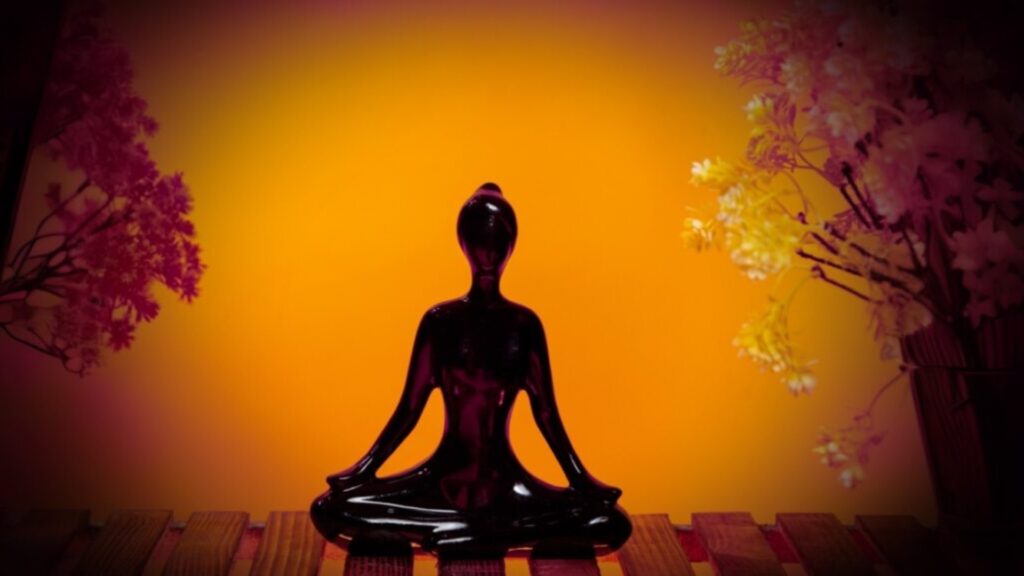
by Linda H. Krier and Jessica Moore Britt
The Role of the Body in Spiritual Development
What is the role of the body in spiritual development? This rich and fascinating question takes us to the frontiers of our understanding of the nature of the body itself. The body has become a focus of attention in the modern world in various ways. There is great interest in how we look, how to be healthy and fit, and how to age well. This interest is supported by new scientific information about the nature of the body as a physiological, anatomical, biological, biochemical, and neurological system. This burgeoning knowledge is helping us understand the stunning, intelligent harmony of the physicality of our body. Furthermore, in the last decades, the fields of psychotherapy, and Body Psychotherapy in particular, have expanded our view of the body to include the intricate and profound ways that our physiology and psychology intertwine in what we could call the “psycho-physical nature” of the body.
In this atmosphere, where the interrelatedness and inseparability of different aspects of the body are being discovered, we can ask new, deeper questions about the relationship of our body to our spirituality:
- In what ways are our body and spirituality related?
- Is there a spiritual aspect to the body?
- If so, what is it, and what does it mean?
- Does the body have a role in spiritual development?
- Can spiritual development impact the body?
- Is spirit alive, and if so, how does it live?
Spirit and Matter
In asking these questions, we run headlong into the view commonly held in Western cultures, that spirit and matter are a fundamental duality; with spirit, God, and heaven in one realm; and matter, our bodies, and the world in another. There are many cultural, philosophical, religious, and phenomenological ramifications of this perspective that are deeply embedded in the consciousness of our culture.
This view has influenced those of us who grew up in this context, in both subtle and unconscious ways. One common assumption is that turning toward the spiritual realm requires turning away from the material world and that turning toward the world is turning outward, away from one’s inner spiritual life. Seekers of spiritual realization often assume that they will find it someplace other than within the nature of their body. Even those who have found a rich spiritual life as part of an embodied practice are influenced by these beliefs in invisible ways. For example, there can be a subtle view that the body is a portal to spiritual experience but not itself made of presence.
Turning from Body to Spirit
The belief that turning toward the spiritual means turning away from the pull of “the flesh” has validity from the perspective of the well-known fact that the instinctual drives for survival, pleasure, and relationship are compelling motivations that cause us to be consumed by our physical needs and appetites. We are biologically programmed to turn to the physical world for the satisfaction of these desires. Therefore, many spiritual teachings and practices focus on ways to contend with, overcome, and refocus from “the flesh,” to orient toward our more fundamental spiritual nature.
In addition to the strong pull and the external focus of our instinctual drives, there are other important phenomena that lead us to believe that spiritual experience and physical life exist in separate realms. One very simple one is how different our body usually feels to us compared to our felt sense of spiritual experience.
The spiritual dimension has many realms and qualities that we experience in different ways. In general, there is a deep sense of connection to something beyond our usual day-to-day sense of self, something much more in the moment, a fresh reality. There can be an experience of profound sacredness, heartfulness, spaciousness, openness, and luminosity—a vastness that we sense is not bound by the physical world, is not “of the world” and, therefore, we presume is not of our body.
Experiencing these inner realms can bring a sense of liberation from our usual life, our familiar sense of self, our limitations, our sufferings, the burdens that we associate with physical life. We feel connected, lighter, freer, and unencumbered by the pain and hurts of the body.
In contrast to this more spiritual sense of the “lightness of being,” our body can at times feel thick, heavy, opaque, and burdened. Our body appears to be an earthbound material object, a source of pain, suffering, and trouble. Our body is often evaluated, compared, judged, and monitored. If not the antithesis of the lightness and liberation of spiritual reality, this sense of “body as object” feels closer to suffering and limitation than to a sense of freedom. The freedom of spiritual reality can begin to be seen as freedom from the body itself.
Our belief in this dichotomy impacts our experience of ourselves in deep and far-reaching ways. It creates a painful quandary in the fabric of our consciousness in which two precious and fundamental aspects of “who” and “what” we are seem to be in irresolvable conflict with each other. We can feel pulled back and forth between our spiritual life and our physical life.
This begs the question: “Is this dichotomy fundamentally true?” Is it true that our body is simply a “material object,” a kind of shell or vessel that seems empty of intrinsic value, that lacks the lightness, freedom, and depth of spiritual reality? Conversely, “is spirituality inherently devoid of living, juicy substantiality, and of the concrete- ness of the physical dimension?” Are our spiritual life and physical life necessarily two different lives? Or is it possible that our spiritual life and our physical life could become— could be— the same life?
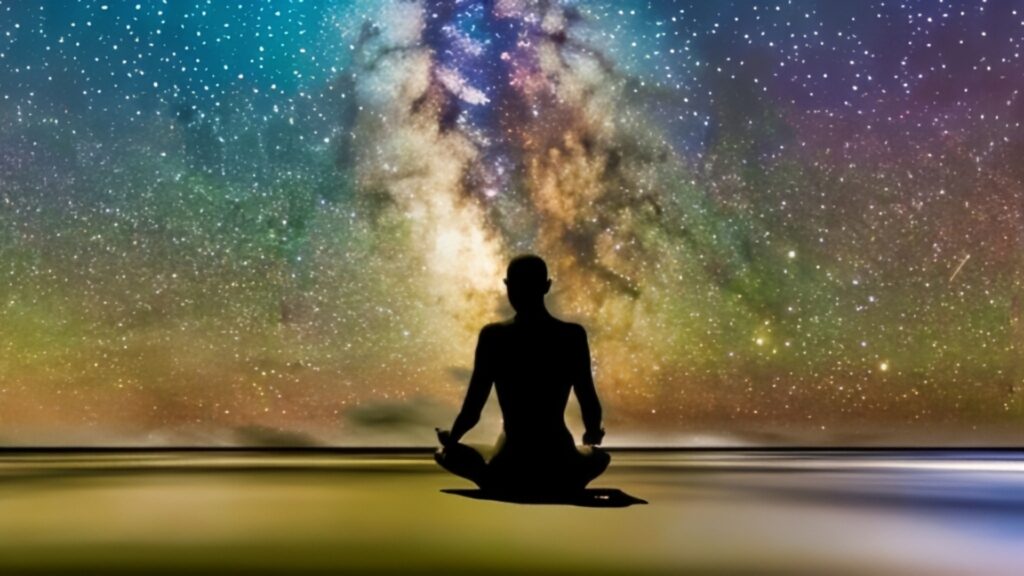
Body as a Form of Spiritual Consciousness
Certain types of experience that can arise in our spiritual journey challenge the view that body and spirit are two separate realms. In these kinds of realization, we begin to perceive that this assumed separation is not the most fundamental truth about our body, nor about physical reality as a whole.
At these times we can see that, although reality appears in many varied forms, shapes, and flavors—as rocks and trees, as people and animals, as experiences such as suffering or bliss—all these forms are fundamentally made out of the same pure consciousness. This consciousness is not simply a function but a medium, a field of sensitivity.
In this condition, we can perceive that physical reality in general, and our physical bodies, are not separate from this field of consciousness. We can directly experience that our body, down to the smallest detail, is made of awake, translucent, luminous consciousness. Our body is alive, luminous consciousness, in physical form, walking, talking, eating, sleeping, etc. Our body is not an object. It is a particular, unique, but inseparable expression of this fundamental reality, this vast living “beingness,” which is the true nature of reality itself. Furthermore, we can see that our physicality cannot be separated from the medium of consciousness. That just can’t happen. It can’t happen any more than our body can be separated from its protoplasm, its nervous system, or its circulatory system.
In these experiences it becomes clearer that our body is always a form of living consciousness, regardless of our state of health, age, weight, fitness, and outer appearance. This is true whether we’ve “worked on” our body or not, or even whether we are aware of our body or not. Becoming conscious of this reality makes an immense difference. It is deeply liberating, settling, relaxing, integrating, and healing. It alters our very experience of life and our self.
We know that many spiritual practitioners can have this deeply satisfying spiritual experience without working directly on their body. We have also seen that this experience of the spiritual nature of the body is not dependent on the body’s condition. What then is the purpose of working with the body in spiritual work?

The Value of Directly Including the Body in Spiritual Work
Often we are blessed with such awakened experiences when we are quiet and still, such as sitting on a meditation pillow, in deep prayer, or when absorbed in a pristine natural environment. All spiritual practitioners know that these realizations, however clear and certain, tend to come and go.
Frequently, it is when we get up and start moving, talking, or going about our daily lives that we forget the totality of our spiritual experience. We can blame our daily life, our body, for “pulling us away” from our spiritual realization back into “normal” or conventional life.
This experience is so common that we have to ask whether there is something about the usual experience of the body that takes us away from our awakened experience. How is it that we can lose our experience of the physical world, and most intimately our own body, as a form of consciousness itself? When we are not experiencing our body as a form of spiritual consciousness, what are we experiencing that we are calling “our body”? This fundamental question invites us to explore openly what we believe we know about our experience of the body.
We are tempted to think that when we sense our body, we are experiencing our physical condition. But what does this really mean? When we consider it on the purely physical level, we are not usually aware of much detail. Most of the functions that are considered to be essential physical aspects of the aliveness of our body—such as the flow of blood through our veins, the electrical impulses traveling through our nerves, the passage of oxygen and nutrients through cell walls, etc.—occur below our level of consciousness. Close examination also reveals that we experience only a part of the total geography of our physical body. For example, someone might experience most of the front of their body, but not very much of their back, or have little awareness of their feet, or sense their muscles but not their organs, etc. Importantly, whatever we do experience, we consider to constitute “our body.” We don’t realize that there is much more to the body that we could experience.
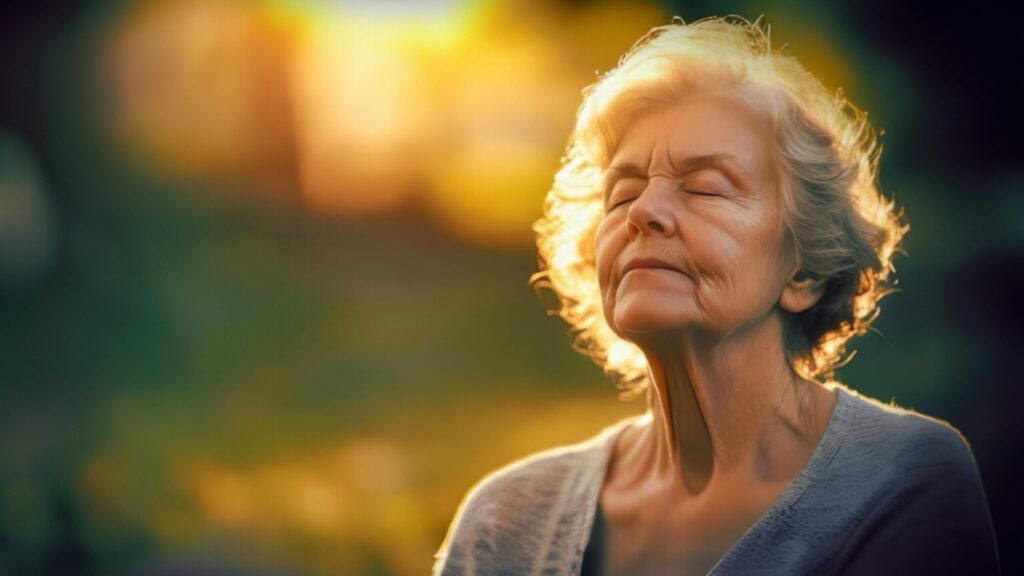
The “Experienced Body”
Looking closely at our direct experience, we find that we are often experiencing a “gestalt” of sensation that has a certain pattern that is familiar to us. Consequently, we consider that pattern of sensation to be “our body.”
This patterned gestalt is composed of many individual elements that we are normally not even aware of. There is a myriad of simple sensations, such as where our arms brush our sides when we walk, how our tongue sits in our mouth, our inner landscape of tensions and pains, the experience of our posture. These together compose a whole inner world of sensation that is our experience of our body.
We are so familiar with this patterned gestalt that we become unaware of the degree to which we believe it to be our body. We do become aware of the familiar gestalt if it begins to change. For example, we might have an experience of feeling more alive than we ever have, or more grounded in our feet; that changes our experience of our body. Or we might have a minor car accident that leaves our body feeling rearranged in some way. Our new bodily sensations can be so surprising and unfamiliar that we don’t even recognize our bodies. We can have the sense that “this doesn’t feel like my body” or even “this isn’t my body.”
Our response to this unfamiliarity reveals both how deeply we believe our familiar sensory pattern to be what our body is, and how compelling our habitual body patterns are. We tend to seek to return to a familiar pattern of body, no matter how positive and powerful our body shifts are, or how sublime our spiritual experiences and insights.
Recognizing this raises new questions:
- Why do we often find it disturbing when our body pattern changes?
- Why are we compelled, consciously or unconsciously, to return to the familiar form of our “experienced body”?
- What determines this form, pattern, and habit that we seem so attached to?
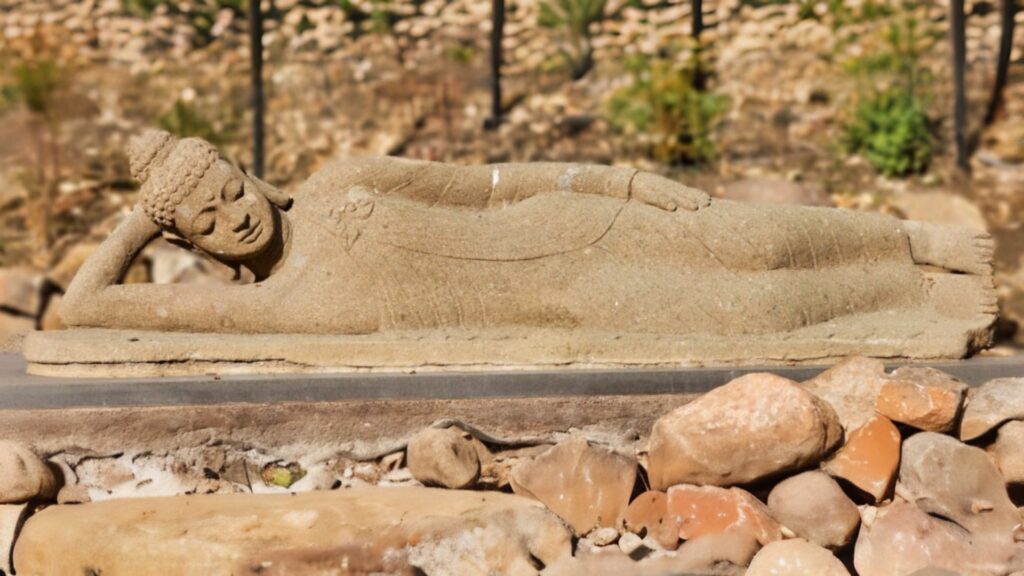
Body and Self
The sense of our body as a totality of familiar physical patterns of sensation is an expression that has evolved through our lifetime. It has formed as the innate tendencies of our body and psyche have interacted with our physical, cultural, and relational environments. Our genetic inheritance is just one part of the picture. Our body’s physical history (whether we played soccer or studied ballet; whether we had small falls or big breaks), and how this history was related to is another ingredient. This points to the importance of our responses to past and present relational fields (whether we felt loved, accepted, rejected, or neglected) as key factors in the shaping of our body and psyche.
Perhaps the most profoundly significant determinant of our familiar pattern, and the one that makes it most compelling, is the way the body is literally connected to, and expresses, our sense of self. Our sense of self is deeply embedded within the body and within the body pattern, or the “experienced body.
Wilhelm Reich articulated this phenomenon with his insight that body patterns reflect the person’s character. He saw further that these patterns are held in place by a network of tensions that can restrict the freedom of breath, and control and limit the flow of energy, emotion, sensation, and aliveness.
The freedom and pattern of the flow of energy through the body is one factor that both determines, and is determined by, areas of hypertonic and hypotonic muscles. This configuration of tensional and energetic elements gives the body a certain shape and contributes to the unique character and texture of our “experienced body.”
The specifics of these shapes have precise meanings to us, as adaptive patterns, and as expressions of early identifications, decisions, and beliefs rooted in our history. These particulars compose our historical sense of self. It is this body that we then live our lives in, from, and as.
We can even go so far as to say that the ego structure does not exist independently of the physical patterns that express it. Keeping these patterns in place in the body has the function of keeping the ego structure—our sense of self—the same. This fact helps us understand our attachment to returning to a familiar body pattern. On a deep and unconscious level, we take this pattern to be not only our body, but also our self.
It is important to recognize that this structuring process of the body is normal and necessary to ego development. The forming ego needs a relatively stable pattern of inner experience to secure the developing sense of self. While this process is normal and universal, it is also at the very core of what separates us from the direct experience of spiritual reality.
In the process of becoming this relatively fixed, historically based self, we gradually lose touch with the immediacy of the present moment, where the purity of spiritual experience lies. We become a self that feels separate from spiritual reality.

Spiritual Realization and the Ego Self
The experience and belief that we are a self that is other than spiritual consciousness, a “separate self,” is well known to be a primary barrier to spiritual realization. We are seeing how this sense of self is formed within, expressed in, and reinforced by the experience of the body as a fixed form in time and space: also that the usual way that this separate self experiences its reality differs in a basic way from the experience of spiritual realization. We can begin to appreciate how conventional, or “normal,” experience and spiritual experience feel like two different realities or two separate worlds.
When we have experienced spiritual realization beyond this divided self, we begin to know ourselves more profoundly, as beingness itself. We know that we are not just a bounded historical self, nor is our body only a heavy encumbrance. When we find ourselves once again caught in the conventional view, spiritual teachings often instruct us to continue different levels of awareness or mindfulness practice and, if possible, to disidentify with the familiar sense of self that continually returns. This step of being able to disidentify from our past, our ego self, our physical body even, is a significant step toward realizing our spiritual nature. The recognition that our “ego” is not fundamentally who and what we are starts to make room for a deeper reality and a more expanded awareness whenever strong, habitual ego patterns arise.
The wisdom and necessity of disidentifying from the ego self and the habitual bodily structure take on a particular significance when we recognize that, while the body continues to preserve its patterns of ego identity, it is continually reinforcing the unconscious belief that this familiar shape and form is “who I am.” The belief that I am this person, with my own specific history, pattern, and flavor— the ego identity itself—is unconsciously encapsulated and reinforced in each breath and every step. It returns again and again—and is confirmed in the way the weight passes across our feet when we walk, the familiar pattern of our breath, the angle of our eyes when we greet a friend, and how much energy and aliveness we experience. We could see it as an unconsciously repeated mantra: “This is who I am, this is who I am . . .” In these simple, invisible, but ubiquitous expressions, we are pulled back into the experience of our historical self. When disidentifying from this pattern, we counter with a different conscious mantra: “This is not who I am, this is not who I am…”
When we recognize that the pattern of the ego in the body is not the body itself, and that this limiting pattern can change, another possibility begins to emerge: the familiar unconscious body mantra can become silent. In this silence, what would the mantra of our steps, our gestures, our glances become?
In this condition, we find that a different kind of freedom becomes possible. Our body becomes an active transformative ally rather than a hindrance or something to be transcended on our spiritual path.
As the body reveals layers of our undigested history and limiting beliefs, it brings them into consciousness in a way that they can be “met” freshly and worked with concretely and directly. When the ego patterns are released, and the roots of the patterns at the emotional and structural levels are no longer held in the body, the impression of the past is, in the present moment, gone.
In this moment, there is no anchor for our history. The old identity, the old belief, is nowhere to be found. We then start to experience a body that is not the body of history, but a new body, living in a new moment, in a new experience of reality. The body’s perceptual capacities and senses are thus liberated, bringing new possibilities of unexpected experiences of our nature and the nature of reality. A spiritual freedom that is a bodily reality emerges, not as spiritual experience contained in a bounded body, but as a new experience of what our body really is—embodied life. We begin to discriminate the form that the body has taken from something more fundamental about the body’s nature as a living, revelatory aspect of our consciousness. This realization is a quantum shift and is a great blessing on the spiritual journey.

The Body of Being
Releasing some of the invisible effort, tensions, and restrictions that are required to maintain the habitual pattern liberates more of the basic energy, the life force, within the body. In this more vital condition, we can see that this sense of being a “fixed object” is not an inherent part of physicality; rather, it is part of the patterned structure that we took to be our body. The body no longer feels as bounded, separate, thick, heavy, painful, and dense.
We can experience our body not only as the repository of ego, defenses, and suffering, but as a revelatory organism of the totality of our consciousness, as a form of living consciousness, inseparable from infinite consciousness. Our body is now revealed to be the intimate, dynamic, living, precious, immediate manifestation of the depth, breadth, and fullness of who we are. Our body becomes more “awakened,” more scintillatingly aware, and more sensitive to some of the more subtle forms of energy. Our body feels more transparent, more conductive, and more alive. This body knows, and has the potential to reveal, all aspects of our consciousness in the moment, including the various qualities of spiritual Presence.
This deeper experiential understanding of the relationship between the physical and spiritual dimensions can initiate a profound maturational process with regard to our instinctual energies. These powerful forces, which previously turned our attention away from spiritual realization, now begin to reveal their potential, not only to support our survival and well-being, but also to fuel the spiritual journey.
We can begin to discover different ways, known to various spiritual traditions, that the body is also designed as a conduit for subtle energies. The energy of shakti, chi, orgone, kundalini, etc., resonates in the physical realm, and can open us to spiritual dimensions.
We can start to become more aware of a spiritual anatomy (which doesn’t appear in anatomy books) that includes various subtle centers such as the chakras, and centers called lataif in the Sufi tradition, which are portals to specific spiritual states. We can feel energetic channels through which subtle energies flow through the nervous system and tissues of the body. These centers and channels tend to be more or less active and more or less developed depending on where we are in our own particular spiritual journey.
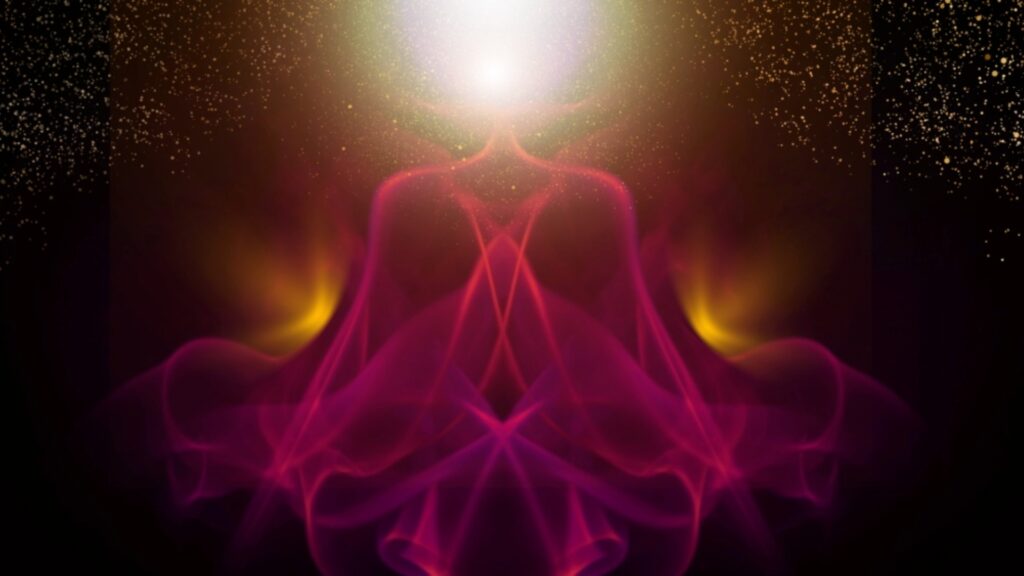
Working with the Body: How the Body Can Open to Its Inner Nature
There is a wide range of ways and paths to involve the body in spiritual practice that have been developed over centuries in different spiritual traditions. Without attempting to describe any specific practices, we can see that certain principles are important to any practice that works with the body in the process of spiritual realization.
First, our orientation toward our body is significant. Approaching our body as a valuable and integral dimension of our sacred wholeness has a powerful impact on the consciousness of the body itself. If we maintain an attitude that the body is a barrier to spiritual realization, the body will conform to that belief, and will remain a barrier.
Practicing with the attitude that our body is a precious living expression of our individual consciousness, a sacred form, brings deeper respect and appreciation for what our body really is and for what it can reveal. Loving attention, honor, and compassion for its difficulties are appropriate to the profound and magnificent consciousness that our body is. A genuine interest in understanding the body’s needs, difficulties, fears, wounds, and energies invites the body to reveal aspects of its history and our consciousness. When touched by our welcoming curiosity and love of truth, the body willingly and naturally reveals unexpected inner dimensions of reality.
Second, these attitudes are also expressed by bringing our conscious awareness more deeply into our body. This is the simple practice of being more aware of whatever sensations are there as we focus our attention on our kinesthetic, intrasubjective experience. We are not looking for something profound or important; we are simply more aware of whatever sensations we find. This practice of awareness can be part of a meditation and can also become an integral part of how we live our life.
To involve the body in the fullness of spiritual practice is an engaging, “up close and personal” process. The kind of awareness that is needed is not a “witnessing from a distance,” but is one that brings a sensing, witnessing consciousness deep into the immediacy of the body’s experience. It includes a willingness to participate deeply in what is actually arising in our somatic presence, from the perspective of wanting to understand and see the truth of our embodied experience.
Third, when we become intimately present and curious about what the body is expressing, we begin to understand more fully what is actually being revealed. Inquiring sincerely, wanting to know, not in a detached, intellectual way, but with a heartfelt interest in the body, and its truth, begins a process of deepening and unfolding of our embodied consciousness. As the meaning and origin of the habits and restrictions that are held in the body are understood, and as these habits and restrictions are contacted by our awareness and loving presence, the underlying aspects of our true nature and the nature of the body can begin to come forward. Gradually allowing ourselves to be with, and in, the full range of physical experience, inhabiting different parts of the terrain of our body, is the process of becoming more fully incarnate—the flesh being penetrated by consciousness in a palpable way.
We find that entering deeply into the body in this way takes us into a sense of a greater Presence and its various manifestations in a remarkable and profound way. The body itself becomes a portal to new possibilities of consciousness.
Fourth, the process of the body opening to its inner nature is a gradual one. The body opens, insight by insight, releasing one belief, or one self-image, or one idea at a time, expanding into new types of freedom one step at a time. This process has its own organic timing and intelligence that we can listen to, and follow, rather than trying to direct or control with our mind.
Because the body is a multidimensional form of consciousness, it needs to be addressed in its totality. Physical needs and limitations, energies, feelings, psychological structures with their meanings and experiences, as well as the organic, evolutionary impulse—all need to be respected and included. When the totality of the body is recognized, an organic process of unfolding arises that includes all the dimensions of our embodied experience in an intelligent and harmonious integration. This process of integration also needs time and proceeds at its own pace.
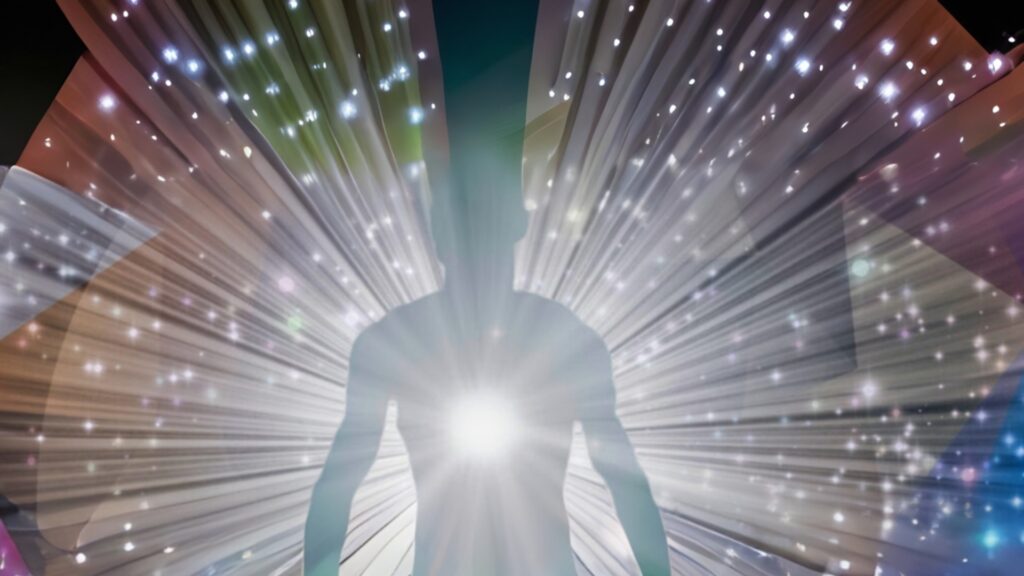
The Awakened Body: The Body of Spiritual Experience
We come to see that working with the body as an integral dimension of who and what we are not only releases us from the patterns and structures of the past that define us, but it also opens doors to who and what we are at the spiritual ground of our being. Through our bodies, we enter the vast terrain of our consciousness, including not only the painful and pleasurable parts of our history, but also our whole belief system, identity, the core of our life force, and spiritual realms that we could not previously imagine. We enter into the great mystery of the marriage of body and soul, spirit and matter.
This marriage is not a matter of bringing two separate things together. It is more that we come to see through our mistaken belief that separation exists in the first place. We can experience that consciousness and the body are actually like two sides of the same coin. The body is a conduit for consciousness because it is consciousness manifesting through and as the body. This is a radical realization that allows many hidden possibilities of embodied life to become palpable, lived realities.
In this awakened condition, the body itself is experienced differently. Our physicality feels lighter, both in its sense of weight, and in its sense of luminosity. Also, our experience of our body is different in different states of realization. For example, we can experience our body as being made of a light, fluid, loving presence: the presence of Divine Love. In this condition, we can perceive the world as made of the same loving light. Or we can experience our body as a spacious, full consciousness that is Presence itself, a palpable “hereness,” a substantial realness without a sense of burden, of limitation, of thickness. Or we can experience the body as an exquisite, luminous emptiness that brings a deep sense of gratitude, connection, and well-being. In certain deep spiritual realizations, we experience our particular body as a multidimensional hologram, containing the totality of Reality from the most physical to the most subtle, here, now, and totally transparent to all levels of being.
At the same time that we experience our body differently, our experience of spiritual conditions takes on a fresh dimension. Without working with the body, spiritual states tend to appear as light, transparent, empty, clear, or even sweet, flowing, and blissful, while somewhat ephemeral. Integrated into the body, this clarity and bliss become more substantial, palpably full, dynamically sensual, more richly textured, with a sense of sturdy groundedness and powerful rootedness.
Spiritual presence can attain a sense of density, as if it is more condensed, concentrated, and fully there or present. There is a tangible sense that our spiritual realization is more complete, stable, established, and certain. We sense a “through-and-throughness”: a sense of nothing being left out, nothing being excluded.
At the same time, we can find that we are physically present in our current reality in a more palpable, concrete way. Our awakened body helps us to emerge from our imagination of what is here, into what is really here now in our present environment.

Physical Life as Spiritual Life
Our body can therefore become a conduit for spiritual qualities to manifest in life in ways that are both more ordinary and more profound than we might normally expect. Then our body not only houses our consciousness, our life, but is made of our life. Spiritual consciousness comes into form and expression, and lives in the world through our own unique physical body.
For example, we often think of compassion as a tenderness of heart that can be expressed in overt acts of kindness to others. We can find that it is also possible for the exquisite, sensitive tenderness of loving-kindness, as a substantial quality, to flow through the body itself, giving our whole embodied consciousness the sense of being the source of an exquisitely sensitive and gentle radiation. This compassionate lovingness then permeates the simplest gesture of fingers and eyes, radiates through the countenance fills the voice and is breathed out with the breath. As we integrate various spiritual qualities, they often spontaneously begin to function in our lives and become an expression of our spiritual maturation.
The embodied qualities, then, not only inform our actions toward others, but their manifestation is expressed in the totality of what our body is, and how it moves: for example, peace comes into the world as we breathe in and out, as we open a door, as we lift our spoon; strength is expressed through the clarity of our steps, the resonance of our voice, and the presence in our handshake. The inner felt sense is that being that Presence is no different from these simple actions of everyday life.
The heart—with its qualities of joy, love, compassion, value, and contactfulness—is not confined to the center of the chest but can permeate the whole body. The intelligence, openness, clarity, and spaciousness of the mind are not confined to the brain or the head but can permeate the entire body with its brilliant knowingness and its open receptivity. The alive sensuality and firmness of our belly supports, strengthens, and enlivens our whole, integrated beingness.
Everyday simple movements become the outflow of being. We can sense that this living beingness animates our first, small awakening movements, the flexing of fingers and toes, the stretching of the spine, as we reinhabit the body upon awakening. All that we are, know, and feel is expressed as we turn between our sheets, as our feet touch the floor, and as we wash, sit, eat, greet, dress, drive, work, rest, and play. Every act is an expression of the dance of being and its manifestations; our body and consciousness are inseparable, each fulfilling the other in a deep inner union. Living is the same as being in this condition of the unity of spirit and matter, of our consciousness and body. The body takes its true place as the lived and living, known and knowing, revealed and revealing presence of spiritual reality.
Within this experience, we can see that embodied life is a living mystery whose potential is extended in the moment through our embodiment. How completely our physicality can express and reveal the Presence that we are, how deep this unity goes, and how singular we truly are, is a matter of constant discovery. At this time in human evolution, as we set our feet on the path of embodied realization, we can participate in the evolution of this great mystery: the potential of embodied life as a living fulfillment of the precious and fundamental truth of the spiritual nature of human consciousness.

Linda H. Krier has been a teacher of the Diamond Approach since 1983 and an Aston-Patterning teacher since 1976. Her passion for illuminating the spiritual nature of the body and its importance in spiritual work informed the creation of the ‘Diamond Body Practice,’ a movement practice that arises from the logos of the Diamond Approach and supports students in engaging the sacred wisdom of their bodies.
As a Diamond Approach teacher, Linda has a private practice in Boulder, Colorado, teaches Diamond Approach groups and classes in the United States and internationally, and is on the training staff of the Ridhwan Foundation. She is a former faculty member of the Aston Training Center and an adjunct faculty member at Naropa University.
Jessica Moore Britt has been a student of Hameed Ali’s since 1978. A Diamond Approach teacher since 1985. She is a training director and leads ongoing groups in Europe and the United States. Mentored by Dick and Chris Price from 1981 to 1989, Jessica was on the Gestalt staff of the Esalen Institute. As a certified Reichian practitioner, she integrated Reichian and Gestalt work. As a nurse in the 1970s, she specialized in childhood sexual and physical abuse. In the 1980s, she studied Continuum Movement with Emilie Conrad. These influences have supported her insights and appreciation for the spiritual and energetic forces involved in the maturational potential of embodied human consciousness.
© 2023 Linda H. Krier and Jessica Moore Britt
